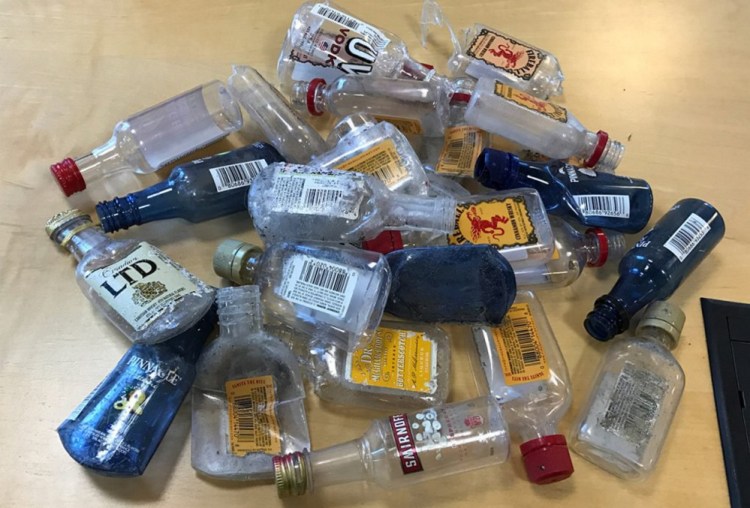It might not be their stated purpose, but 50-milliliter liquor bottles – commonly known as “nips” – sure are tailor-made for drinking while driving.
And sure enough, an explosion in the popularity of the tiny one-shot bottles in Maine has coincided with rare upticks in drunken-driving convictions and fatalities, as well as an increase in the number of nips bottles littering the roadsides.
Bottling those nips also provides good-paying jobs to a number of Mainers, but that can’t be the deciding factor here; if the tiny bottles are making Maine’s roads unacceptably less safe – and it appears they are – they have to go.
That decision is up to the State Liquor and Lottery Commission, which is being asked by Gov. Paul LePage and the Bureau of Alcoholic Beverages and Lottery Operations to end the sale of 50-milliliter bottles.
The issue surfaced this year as legislators worked toward adding nips to the state bottle-deposit law, which they ultimately did over LePage’s veto.
The deposit bill was a good solution to mounting litter from bottle throwaways, but LePage attacked it – eventually – for not doing enough to stop drunken driving.
He then threatened to end nip sales if the legislation passed, a strange bit of logic, considering that consuming nips raises a drinker’s blood-alcohol content whether there is a deposit on the bottle or not.
Nevertheless, the deposit bill passed, and now the governor is following through on his threat. The liquor commission will take up his request Tuesday, and may make a decision that day.
It will have to ponder the fact that nip sales jumped from half a million in 2007 to 8.4 million last year, with a significant jump in 2014, according to the beverages and lottery bureau.
Most sales now occur at convenience stores, the type of places where people stop in to grab a snack and drink for the drive. It’s not a difficult leap to assume that many of those nips are being consumed on the road – unlike larger bottles, they can be quickly emptied and discarded, leaving no evidence of drinking but a lot more litter.
Backing up that assumption, the bureau argues, is that around the same time that nip sales soared, Maine saw its first increase in operating-under-the-influence convictions since 2007. Traffic deaths attributable to drunken driving are also up.
That doesn’t show a direct correlation between 50-milliliter bottles and drunken driving, and law enforcement has yet to weigh in. But it’s a pretty good start to making a case for ending sales of nips.
Unfortunately, it’s unclear what that would mean for the 130 or so Mainers who work at Sazerac Co. in Lewiston bottling Fireball Cinnamon Whisky, a liqueur that accounts for half of the nips sales in Maine – $2.8 million worth last fiscal year. The company argues that the uptick in drunken driving could have other causes, and that the ban proposal is politically motivated.
Maybe, but the numbers and common sense show that nips make Maine roads less safe, and it is up to the liquor commission to act on the side of public safety.
Send questions/comments to the editors.


